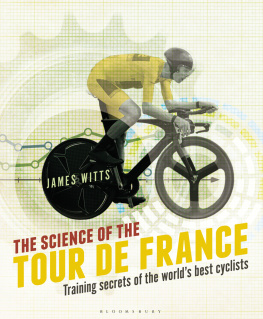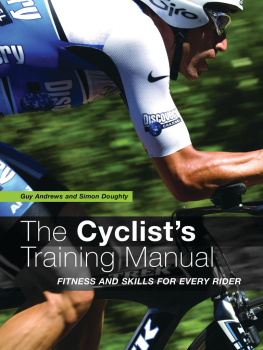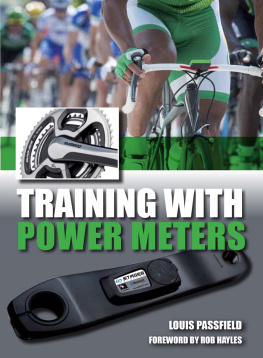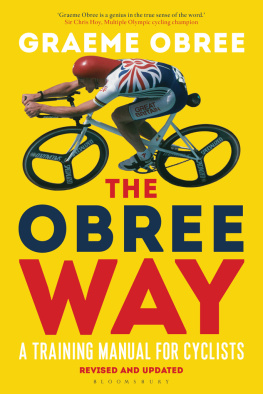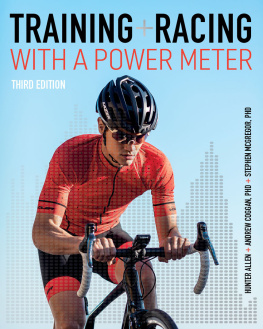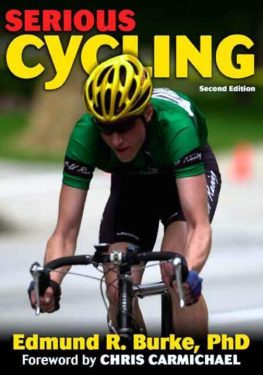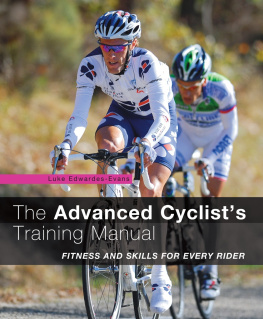
BLOOMSBURY SPORT
An imprint of Bloomsbury Publishing Plc
| 50 Bedford Square | 1385 Broadway |
| London | New York |
| WC1B 3DP | NY 10018 |
| UK | USA |
www.bloomsbury.com
First published 2016
Bloomsbury is a registered trademark of Bloomsbury Publishing Plc
This electronic edition published in 2016 by Bloomsbury Publishing Plc
James Witts, 2016
James Witts has asserted his right under the Copyright, Designs and Patents Act, 1988, to be identified as Author of this work.
All rights reserved
You may not copy, distribute, transmit, reproduce or otherwise make available this publication (or any part of it) in any form, or by any means (including without limitation electronic, digital, optical, mechanical, photocopying, printing, recording or otherwise), without the prior written permission of the publisher. Any person who does any unauthorised act in relation to this publication may be liable to criminal prosecution and civil claims for damages.
No responsibility for loss caused to any individual or organisation acting on or refraining from action as a result of the material in this publication can be accepted by Bloomsbury or the author.
British Library Cataloging-in-Publication Data
A catalogue record for this book is available from the British Library.
Library of Congress Cataloging-in-Publication data has been applied for.
ISBN: PB: 978-1-4729-2170-3
ePDF: 978-1-4729-2172-7
ePub: 978-1-4729-2171-0
To find out more about our authors and books visit www.bloomsbury.com. Here you will find extracts, author interviews, details of forthcoming events and the option to sign up for our newsletters.
The author and publishers gratefully acknowledge the permissions granted to reproduce the third party copyright materials contained in this book. Every effort has been made to trace copyright holders and to obtain their written permission for the use of copyright material. The author and publishers apologise for any errors or omissions in the copyright acknowledgements contained in this book, and would be grateful if notified of any corrections that should be incorporated in future reprints or editions of this book.
CONTENTS



Maurice Garin, winner of the first Tour de France in 1903, taking a lap of honour in the Parc des Princes, Paris, at the finish of the 50th Tour de France, on 26th July 1953
THE PROLOGUE

Maurice Garin won his first professional race in 1893. The 22-year-old Frenchman had worked as a chimney sweep seven years earlier before opening a bike shop with his brothers Franois and Csar. But he loved to race. So he worked. And raced. That first victory came in a 24-hour race in Paris and highlighted the impact a good bike has on performance Garin had sold his first bike before the race and replaced it with a much lighter model. It still weighed more than 16kg, but after riding 701km in 24 hours, he crossed the line 49 minutes ahead of his nearest rival.
Garin not only had the distance to contend with there was the cold, too. The race took place in February, which explains the Frenchmans race nutrition plan that included eight cooked eggs, 45 lamb cutlets, an uncertain number of oysters, and all washed down with 7 litres of tea and 19 litres of hot chocolate.
Ten years of racing later, Garins equipment and nutrition choice was equally as rudimentary, but that didnt stop him winning the inaugural Tour de France in 1903. He ticked of the six-stage race stage distances ranging from 268km to 471km in 94 hours, 33 minutes and 14 seconds, beating countryman Lucien Pothier by nearly three hours. He did so with a minimal support staff Garins friend Delattre preparing sustenance, though he did have a soigneur to ease aching muscles.
In 2015, Chris Froome won his second Tour de France aboard his carbon-fibre Pinarello Dogma F8, which hit the scales at 6.8kg nearly 10kg lighter. While Garin raced alone, Froome received valuable support from his eight Team Sky teammates, sending him to Paris at the end of the 21st stage in 84 hours, 46 minutes and 14 seconds, just one minute and 12 seconds clear of runner-up Nairo Quintana.
As well as the riders, Team Sky sent a support team so large that other teams complained that their fleet of vehicles was hogging the hotel car parks. Within the equipment truck, kitchen truck and support cars sat a group of men and women who provided nutritional data and mechanical and sports-science support, all in the name of peak performance.
Team Sky might be the standard-bearers for science in professional cycling but other teams have cottoned on. In the past, a teams budget would have almost entirely focused on a riders salary. In 2016, though riders bank accounts still account for a high proportion of a teams annual budget Tinkoff Sports Peter Sagan and Alberto Contador are both reportedly on a salary of 4 million teams are waking up to the fact that its worth spending 1.9 million on a rider and 100,000 on a world-class sports scientist rather than spending 2 million purely on the rider.
Where once riders training schedules consisted of riding until the sun disappeared, now theyre based on training zones, power meters and analytical computer software. Garins oysters have been replaced with gels that have been researched, designed and tested in laboratories.
And thats where The Science of the Tour de France comes in. Ive spoken to the worlds greatest riders about their application of science, but to really get under the skin of why theyd choose a certain depth of wheel over another or an electrolyte drink over water, Ive interviewed and spent race time with the men and women in metaphorical white coats too.
Over the next 12 chapters, sports scientists, coaches and nutritionists from Tinkoff Sport, Team Sky, Movistar, Giant-Alpecin, BMC Racing and many other teams are placed under the spotlight to answer such questions as: What is the ideal altitude for a training camp? How do riders keep cool when the mercury tips over 40C? And why on earth do Giant-Alpecin insist on drinking Slush Puppies before a time trial?
Whats most exciting to me is that this is applied science. Cyclists and their support teams are testing out cutting-edge theories and often the research is brand new. As Dr Jonathan Baker, sports scientist at Team Dimension Data told me, There are lots of scientists working around the world on research projects focused on subjects like what causes fatigue? or how to boost power? We tend to see an awful lot of research papers around 10,000 are published globally every year. Your job is to pick through them and find the applicable bits, sometimes modifying the detail to extract the best bits from the research. Something might improve a physiological parameter in the lab but simply doesnt work in the world of professional cycling, which is far less controlled.

